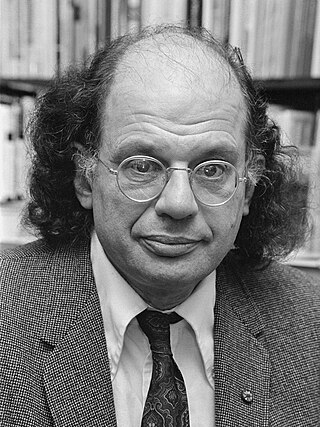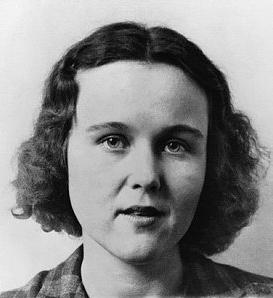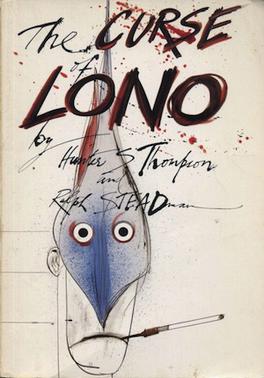David S. Wills is a Scottish writer and editor who specializes in mid-twentieth century American literature. He is best known for his studies of William S. Burroughs and Hunter S. Thompson, as well as for editing the literary journal Beatdom .
David S. Wills is a Scottish writer and editor who specializes in mid-twentieth century American literature. He is best known for his studies of William S. Burroughs and Hunter S. Thompson, as well as for editing the literary journal Beatdom .
Wills was born in Dundee, Scotland, where he earned his master's degree in American literature. [1] He has spent much of his life in Asia and as of 2021, resided in Kampot, Cambodia. [2]
Wills is the editor of Beatdom literary journal, which he founded in 2007. [2] [3] The journal focuses on the writings of the Beat Generation and includes essays, interviews, reviews, and poetry. Prominent interviewees include Patti Smith, Hank Williams III, Richie Ramone, Gary Snyder, Carolyn Cassady, Ken Babbs, and Bill Morgan. [4]
Wills is the author of Scientologist! William S. Burroughs and the 'Weird Cult,' a study of the Beat author's decades-long relationship with the Church of Scientology. Journalist Tony Ortega called it “an engrossing read” and “a road map for future scholars.” [5] Wills later wrote a book about Allen Ginsberg titled World Citizen: Allen Ginsberg as Traveller, which was named "Scottish Book of the Week" soon after its release. [6]
In 2021, Wills published High White Notes: The Rise and Fall of Gonzo Journalism, a study of the work of Hunter S. Thompson. It was released on the 50th anniversary of the publication of Fear and Loathing in Las Vegas . Wills' book explores the creation of Gonzo journalism, dispels various myths about the author, and explains Thompson's descent into inconsistent and often incoherent writing. [7] It has been praised for its "exhaustive and unequaled research." [8]
Wills frequently contributes writings on the Beat Generation and other twentieth-century literature to Quillette , Lithub , Mental Floss , Evergreen Review , and other publications. [9] He has worked with the U.S. Library of Congress and the Dutch government to celebrate the work of Allen Ginsberg. [10] He has also worked with the Allen Ginsberg Estate to document the decades-long friendship between Ginsberg and Hunter S. Thompson. [11]
In addition to writing and editing, Wills works as a lecturer. In 2021, he gave the keynote address at the European Beat Studies Network conference, [12] and in 2023, he lectured on Hunter S. Thompson in San Luis Obispo, California. [13]

Irwin Allen Ginsberg was an American poet and writer. As a student at Columbia University in the 1940s, he began friendships with Lucien Carr, William S. Burroughs and Jack Kerouac, forming the core of the Beat Generation. He vigorously opposed militarism, economic materialism, and sexual repression, and he embodied various aspects of this counterculture with his views on drugs, sex, multiculturalism, hostility to bureaucracy, and openness to Eastern religions.

Gonzo journalism is a style of journalism that is written without claims of objectivity, often including the reporter as part of the story using a first-person narrative. The word "gonzo" is believed to have been first used in 1970 to describe an article about the Kentucky Derby by Hunter S. Thompson, who popularized the style. It is an energetic first-person participatory writing style in which the author is a protagonist, and it draws its power from a combination of social critique and self-satire. It has since been applied to other subjective artistic endeavors.

Hunter Stockton Thompson was an American journalist and author. He rose to prominence with the publication of Hell's Angels (1967), a book for which he spent a year living with the Hells Angels motorcycle club to write a first-hand account of their lives and experiences. In 1970, he wrote an unconventional article titled "The Kentucky Derby Is Decadent and Depraved" for Scanlan's Monthly, which further raised his profile as a countercultural figure. It also set him on the path to establishing his own subgenre of New Journalism that he called "Gonzo", a journalistic style in which the writer becomes a central figure and participant in the events of the narrative.

William Seward Burroughs II was an American writer and visual artist. He is widely considered a primary figure of the Beat Generation and a major postmodern author who influenced popular culture and literature. Burroughs wrote eighteen novels and novellas, six collections of short stories and four collections of essays, and five books have been published of his interviews and correspondences; he was initially briefly known by the pen name William Lee. He also collaborated on projects and recordings with numerous performers and musicians, made many appearances in films, and created and exhibited thousands of visual artworks, including his celebrated "Shotgun Art".

The Beat Generation was a literary subculture movement started by a group of authors whose work explored and influenced American culture and politics in the post-World War II era. The bulk of their work was published and popularized by Silent Generationers in the 1950s, better known as Beatniks. The central elements of Beat culture are the rejection of standard narrative values, making a spiritual quest, the exploration of American and Eastern religions, the rejection of economic materialism, explicit portrayals of the human condition, experimentation with psychedelic drugs, and sexual liberation and exploration.

Oscar "Zeta" Acosta Fierro was a Mexican American attorney, author and activist in the Chicano Movement. He wrote the semi-autobiographical novels Autobiography of a Brown Buffalo (1972) and The Revolt of the Cockroach People (1973), and was friends with American author Hunter S. Thompson. Thompson characterized him as a heavyweight Samoan attorney, Dr. Gonzo, in his 1971 novel Fear and Loathing in Las Vegas. Acosta disappeared in 1974 during a trip in Mexico and is presumed dead.

Joan Vollmer was an influential participant in the early Beat Generation circle. While a student at Barnard College, she became the roommate of Edie Parker. Their apartment became a gathering place for the Beats during the 1940s, where Vollmer was often at the center of marathon, all-night discussions. In 1946, she began a relationship with William S. Burroughs, later becoming his common-law wife. In 1951, Burroughs killed Vollmer. He claimed, and shortly thereafter denied, the killing was a drunken attempt at playing William Tell.
The Subterraneans is a 1958 novella by Beat Generation author Jack Kerouac. It is a semi-fictional account of his short romance with Alene Lee (1931–1991), an African-American woman, in Greenwich Village, New York. It was the first work of Kerouac’s to be released following the success of On the Road. The Subterraneans and its following novel,The Dharma Bums, both proved to be popular when released in 1958, and are now seen as important works of the Beat Literature. A Hollywood film adaptation would be released in 1960.

Tristessa is a 1960 novella by Beat Generation writer Jack Kerouac set in Mexico City. It is based on his relationship with a Mexican prostitute. The woman's real name was Esperanza ; Kerouac changed her name to Tristessa.

Raoul Duke is the partially fictionalized author surrogate character and sometimes pseudonym used by Hunter S. Thompson as the main character and antihero for many of his works. He is perhaps best known as the narrator for his 1971 autobiographical novel Fear and Loathing in Las Vegas. The book was originally written under the name Raoul Duke. The character wears a bucket hat and yellow tinted aviator glasses.
"The Kentucky Derby Is Decadent and Depraved" is a seminal sports article written by Hunter S. Thompson on the 1970 Kentucky Derby, which first appeared in an issue of Scanlan's Monthly in June of that year. The article marked the first appearance of what became known as "gonzo journalism", the style that Thompson came to epitomize through the 1970s.

The Rum Diary is an early novel by American writer Hunter S. Thompson. It was written in the early 1960s but was not published until 1998. The manuscript, begun in 1959, was discovered among Thompson's papers by Johnny Depp. The story involves a journalist named Paul Kemp who, in the 1950s, moves from New York to work for a major newspaper, The Daily News, in San Juan, Puerto Rico. It is Thompson's second novel, preceded by the still-unpublished Prince Jellyfish.

The Curse of Lono is a book by Hunter S. Thompson describing his experiences in Hawaii in 1980. Originally published in 1983, the book was only in print for a short while. In 2005 it was re-released as a limited edition. Only 1000 copies were produced, each one being signed by the author and artist Ralph Steadman.The book is now available as a smaller hardcover edition.

Ali's Smile: Naked Scientology is a collection of essays and a short story by American Beat writer William S. Burroughs (1914–1997). First published in 1971 as the short story "Ali's Smile", the book eventually contained a group of previously published newspaper articles as well, all of which address Scientology. Burroughs had been interested in Scientology throughout the 1960s, believing that its methods might help combat a controlling society. He joined the Church of Scientology later in the decade. However, he became disenchanted with the authoritarian nature of the organization. In 1970 Burroughs had published a "considered statement" on Scientology's methods because he felt they were significant enough to warrant commentary. These pieces were later gathered together into Ali's Smile: Naked Scientology, which religious studies scholar Hugh B. Urban describes as a "nonscholarly popular exposé of Scientology". Burroughs's texts argue that while some of Scientology's therapies are worthwhile, the dogmatic nature of the group and its secrecy are harmful.

Fear and Loathing in Las Vegas: A Savage Journey to the Heart of the American Dream is a 1971 novel in the gonzo journalism style by Hunter S. Thompson. The book is a roman à clef, rooted in autobiographical incidents. The story follows its protagonist, Raoul Duke, and his attorney, Doctor Gonzo, as they descend on Las Vegas to chase the American Dream through a drug-induced haze, all the while ruminating on the failure of the 1960s countercultural movement. The work is Thompson's most famous book and is noted for its lurid descriptions of illicit drug use and its early retrospective on the culture of the 1960s. Thompson's highly subjective blend of fact and fiction, which it popularized, became known as gonzo journalism. Illustrated by Ralph Steadman, the novel first appeared as a two-part series in Rolling Stone magazine in 1971 before being published in book form in 1972. It was later adapted into a film of the same title in 1998 by director Terry Gilliam, starring Johnny Depp and Benicio del Toro, who portrayed Raoul Duke and Dr. Gonzo, respectively.
John Tytell is an American writer and academic. He is professor emeritus of modern American literature at Queens College, City University of New York.

Kerouac: Kicks Joy Darkness is a 1997 spoken word tribute album released through Rykodisc featuring late Beat Generation writer Jack Kerouac's work performed by various artists. Notable performers include: Michael Stipe, Allen Ginsberg, Hunter S. Thompson, Johnny Depp, and Patti Smith. Seven out of the twenty-five tracks are strictly spoken word pieces, while the rest feature music.

Anthony "Tony" Ortega is an American journalist and editor who is best known for his coverage of the Church of Scientology and his blog The Underground Bunker. He was executive editor of Raw Story from 2013 until 2015. Previously, he had been a journalist at the New Times LA, the editor-in-chief of the Broward-Palm Beach New Times from 2005 to 2007, and the editor-in-chief of The Village Voice from 2007 to 2012. In 2015, he was executive editor of the YouTube channel TheLipTV. He is author of the non-fiction book The Unbreakable Miss Lovely: How the Church of Scientology tried to destroy Paulette Cooper, about journalist Paulette Cooper and the Church of Scientology's attempts to silence her after her own book was published.
Beatdom is a Scottish literary journal. It was founded in 2007 and is published annually in May. The journal features essays, reviews, and interviews concerning the Beat Generation, as well as short fiction and poetry. Wills refers to Beatdom as a “semi-academic” publication because it tackles subjects of academic interest in an accessible fashion.